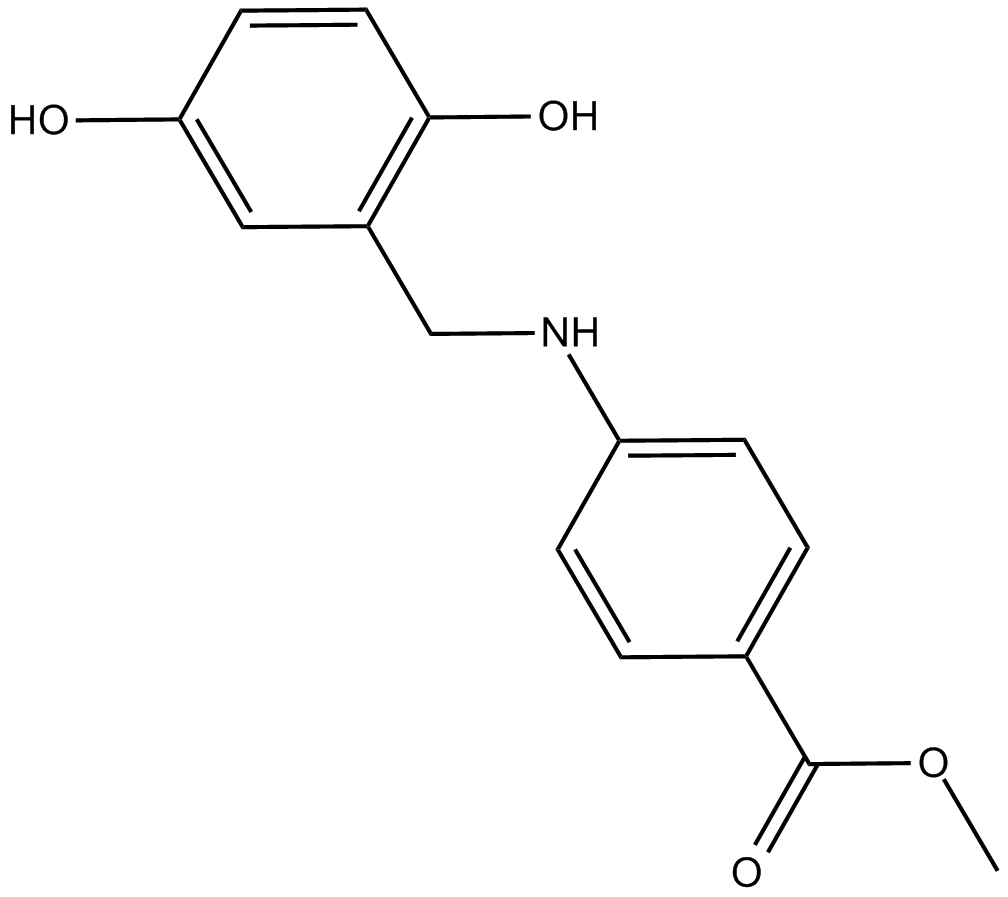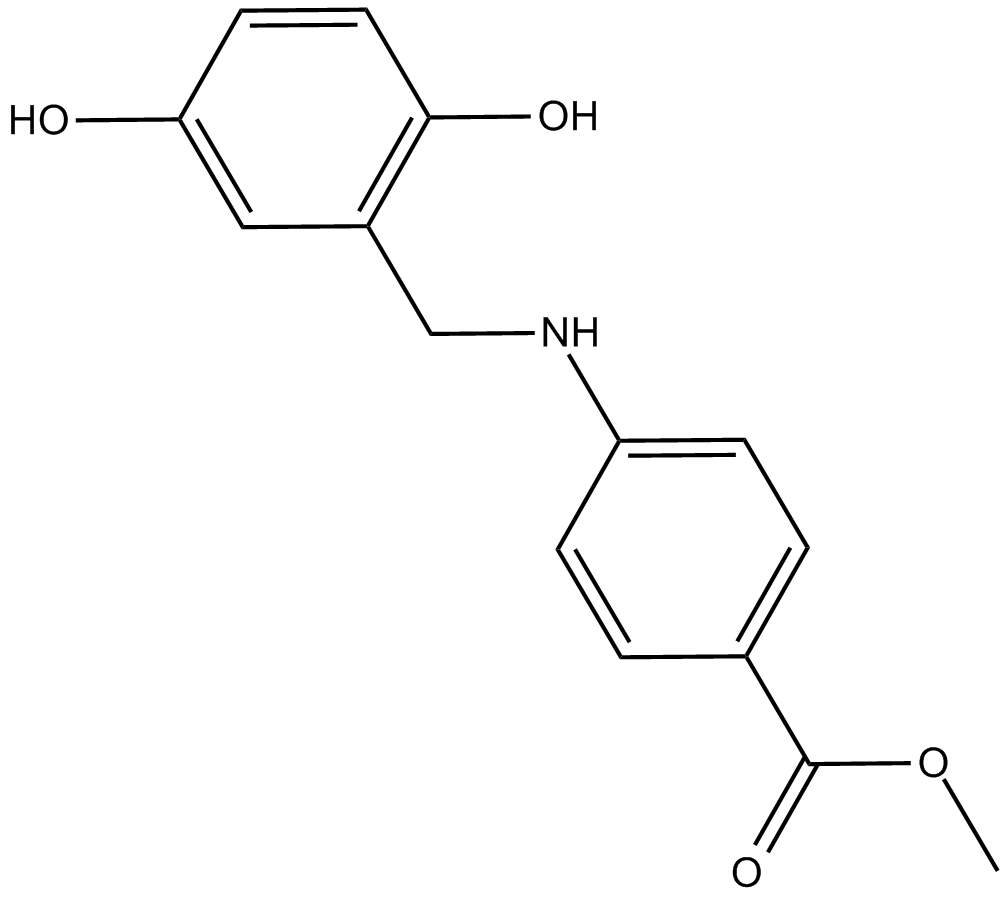AG957
AG957 is a tyrosine phosphorylation inhibitor that targets transforming Bcr-Abl fusion proteins (p185Bcr-Abl, p210Bcr-Abl), as well as normal c-Abl [1].
The abl proto-oncogene is expressed in all cell types. The protein p140c-abl is localized both to the nucleus and the cytoplasm. The abl transforming proteins p160gag-abl, p210bcr-abl, and p185bcr-abl are exclusively cytoplasmic proteins. The intrinsic protein tyrosine kinase activity of the transforming abl proteins is higher than that of the normal p140c-abl [1].
AG957 is a tyrosine phosphorylation inhibitor. AG957 inhibited human p185Bcr-Abl, p210Bcr-Abl and normal c-Abl with IC50 values of 4.3, 1, and 7.1 μM, respectively. AG957 inhibited mouse normal c-Abl with IC50 value of 6 μM. AG957 also inhibited epidermal growth factor receptor with IC50 value of 0.25 μM. In chronic myelogenous leukemia (CML) K562 cells, AG957 inhibited p210bcr-abl kinase activity and cell growth. AG957 at 20 μM also inhibited DNA synthesis as early as 2 h by 60% [2]. In K562 cells, AG957, a selective Bcr-Abl inhibitor, blocked taxol-induced PKCi activation and sensitized these cells to taxol-induced apoptosis [3].
In mice, AG957, the c-Abl inhibitor, attenuated LPS-induced pulmonary permeability [4].
References:
[1]. Anafi M, Gazit A, Gilon C, et al. Selective interactions of transforming and normal abl proteins with ATP, tyrosine-copolymer substrates, and tyrphostins. J Biol Chem. 1992 Mar 5;267(7):4518-23.
[2]. Kaur G, Gazit A, Levitzki A, et al. Tyrphostin induced growth inhibition: correlation with effect on p210bcr-abl autokinase activity in K562 chronic myelogenous leukemia. Anticancer Drugs. 1994 Apr;5(2):213-22.
[3]. Jamieson L, Carpenter L, Biden TJ, et al. Protein kinase Ciota activity is necessary for Bcr-Abl-mediated resistance to drug-induced apoptosis. J Biol Chem. 1999 Feb 12;274(7):3927-30.
[4]. Fu P, Usatyuk PV, Lele A, et al. c-Abl mediated tyrosine phosphorylation of paxillin regulates LPS-induced endothelial dysfunction and lung injury. Am J Physiol Lung Cell Mol Physiol. 2015 May 15;308(10):L1025-38.
| Physical Appearance | A crystalline solid |
| Storage | Store at -20°C |
| M.Wt | 273.3 |
| Cas No. | 140674-76-6 |
| Formula | C15H15NO4 |
| Synonyms | NSC 654705,Tyrphostin AG957 |
| Solubility | insoluble in H2O; ≥15.2 mg/mL in EtOH; ≥32.3 mg/mL in DMSO |
| Chemical Name | 4-[[(2,5-dihydroxyphenyl)methyl]amino]-benzoic acid, methyl ester |
| SDF | Download SDF |
| Canonical SMILES | COC(c(cc1)ccc1NCc(cc(cc1)O)c1O)=O |
| Shipping Condition | Small Molecules with Blue Ice, Modified Nucleotides with Dry Ice. |
| General tips | We do not recommend long-term storage for the solution, please use it up soon. |
Quality Control & MSDS
- View current batch:
Chemical structure









